|
John Tyman's Cultures in Context Series Torembi and the Sepik A Study of Village Life in New Guinea |
|
Topic No. 23: Opening a New Spirit House ~ Photos 446 - 495 |
|
John Tyman's Cultures in Context Series Torembi and the Sepik A Study of Village Life in New Guinea |
|
Topic No. 23: Opening a New Spirit House ~ Photos 446 - 495 |
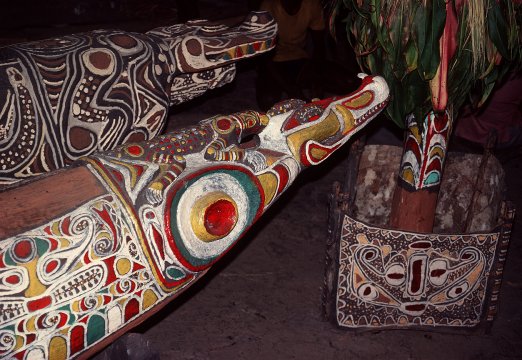 |
| 451. The inside of the house had also been decorated. Oil paints flown in from Wewak, were used to clean up one of the old drums and some of the bark screens. |
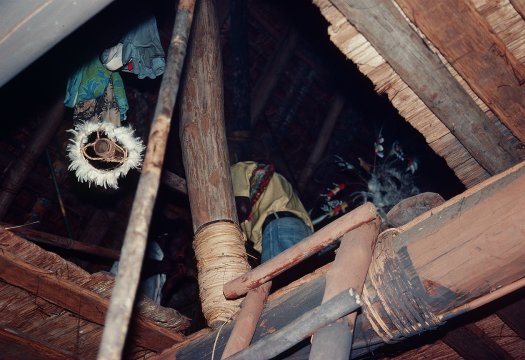 |
| 452. The flute players hiding in the loft, whose job was to impersonate the spirits, had decorated their instruments with rings of feathers. |
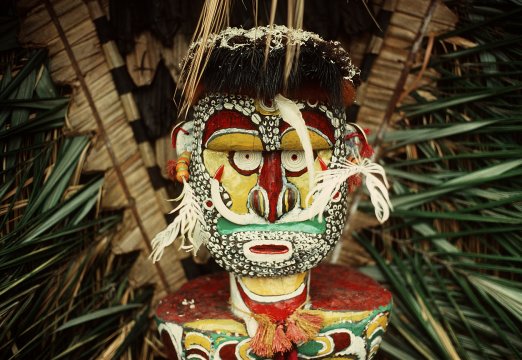 |
| 453. And there was a new male debating stool. Though usually positioned inside the house he was allowed out-of-doors for the sing sing. |
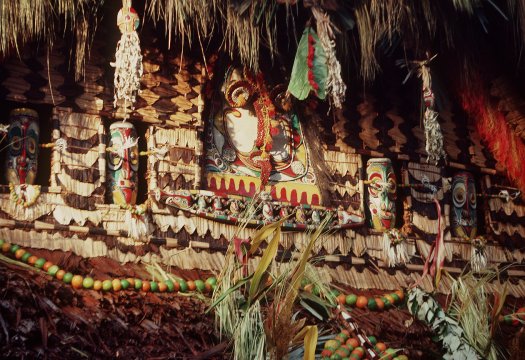 |
| 457. The masks in the walls of the loft represent their most famous ancestors. And the open spaces, or holes, between them, are the eyes of the house. |
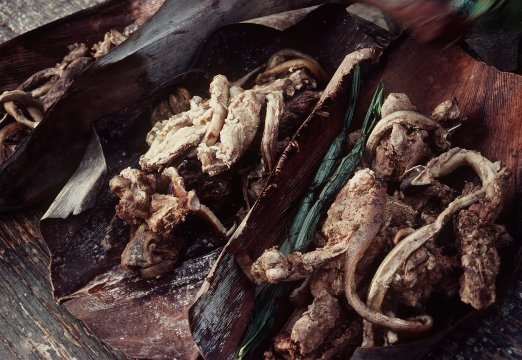 |
| 458. Once the spirits had occupied the building they had to be fed, so a pig was killed, cooked and divided into as many pieces as there were families represented in the house. |
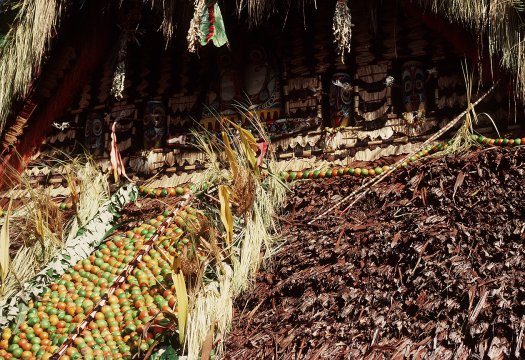 |
| 462. As they danced, the crowd urged them on, and the spears were thrown – with great accuracy – striking the ears … that is the ends of the gable on either side of the masks. |
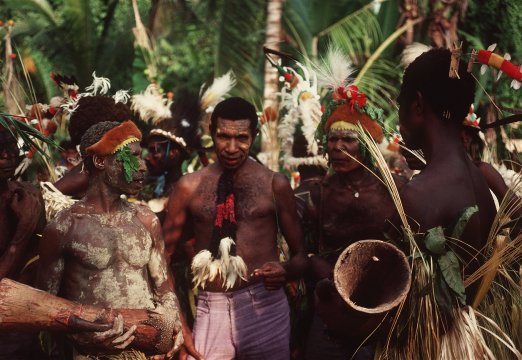 |
| 465. The main celebration, with wholesale singing and dancing, did not begin till the heat of the day was past, and it continued thereafter from late afternoon until sunrise for 21 days. |
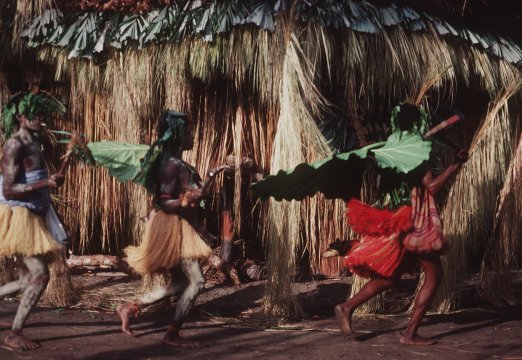 |
| 466. The flutes were played throughout this period, day and night, and the women who had danced first did so again from time to time, with their leaves and their grass skirts flying in the breeze. |
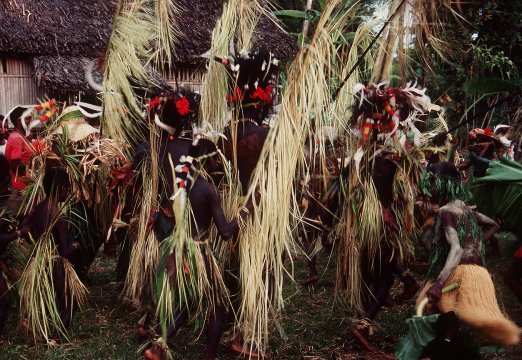 |
| 470. The women paraded in grass skirts, and the men carried spears and palm fronds. |
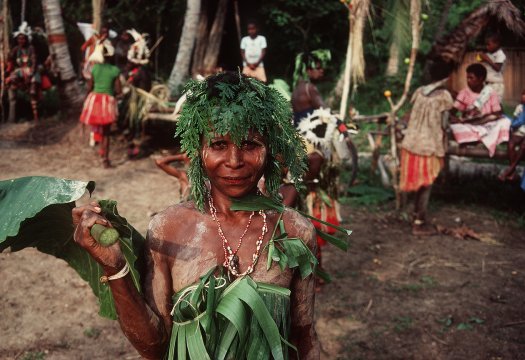 |
| 471. They did not dance continuously, however. Instead they’d perform for 15 or 20 minutes, and then take a break, when they would sit, or stand, and talk among themselves, showing off their gear. |
 |
| 472. This was true of children as well as adults. |
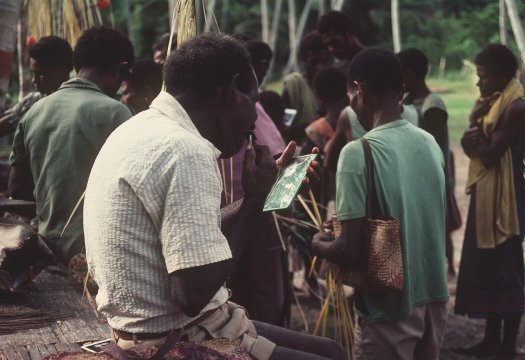 |
| 473. For some it was a chance to roll a cigarette, or chew betel. And for those who had left home in a hurry there was even time for a quick shave! |
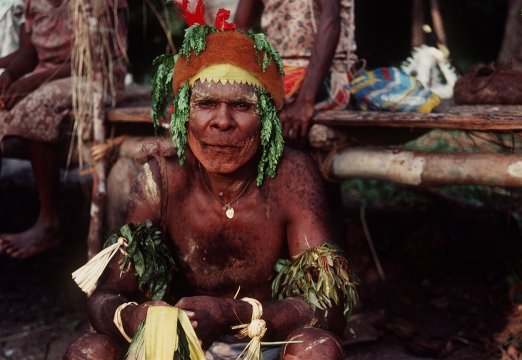 |
| 475. The commonest headbands among the men were made of cuscus fur … a reminder of the days when they were worn only by those who had killed a man in battle. |
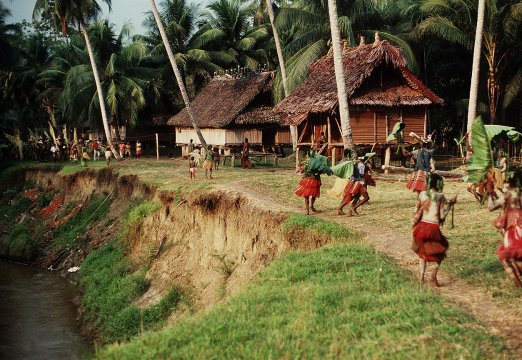 |
| 476. About 5 o’clock, the cry went up that the group from Torembi 3 had arrived, and the dancers from Torembi 2 went out to meet them on the river bank. |
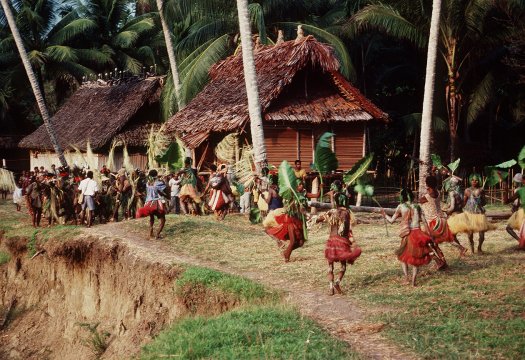 |
| 477. They danced there together for a while. Pretending they were enemies, they first tried to drive the newcomers away. Then they moved to the dancing ground together. |
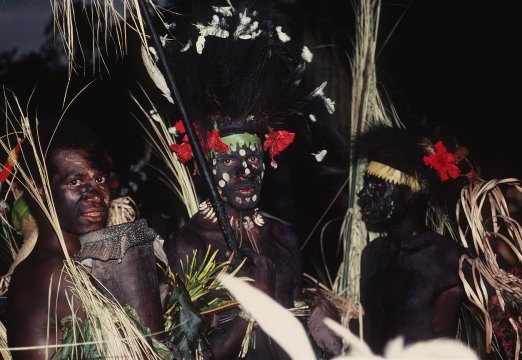 |
| 478. The dancers from Torembi 3 had darkened their skins, and were quite black … with matching head dresses made from the feathers of the muruk or cassowary. |
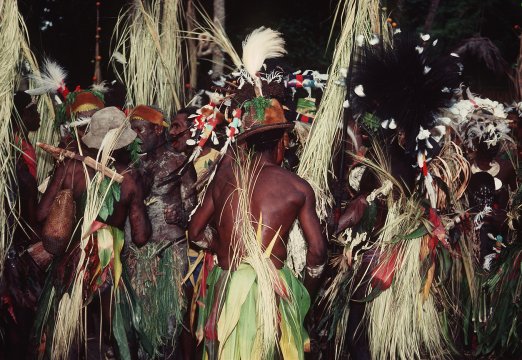 |
| 479. So they danced again, around and around the haus tambaran, and
around and around the waak. The chorus to their song began:
We’re all going round the stone." |
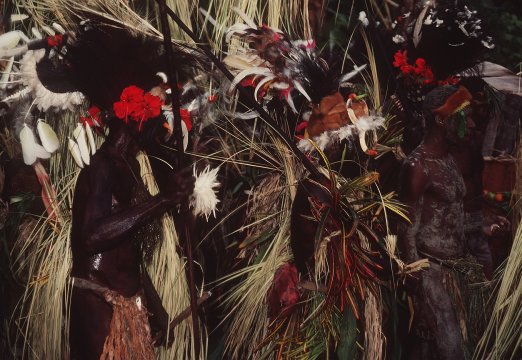 |
| 480. As the sun sank lower in the sky they danced on, well into the night … all night long in fact. |
 |
| 481. The event looked forward to most was the coming of the dancers from Torembi 1. Being the biggest village it was supposed to provide the best show best show, and seating was at a premium. |
 |
| 483. This fence made it possible for them to charge admission to those who came merely to watch. It cost about 20 cents to get inside. The fence itself was made from the leaves of sago palms. |
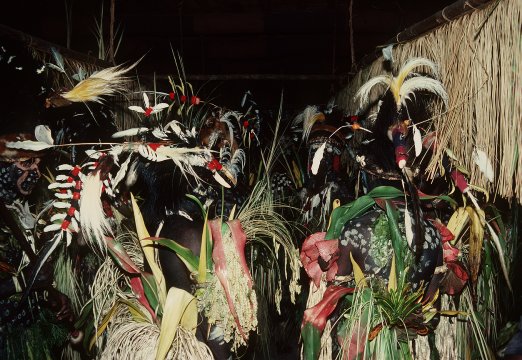 |
| 485. The men meanwhile worked up a sweat inside. |
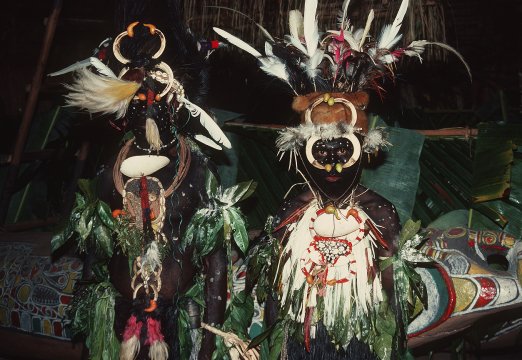 |
| 486. In the interval they even posed for photos … in the dry. |
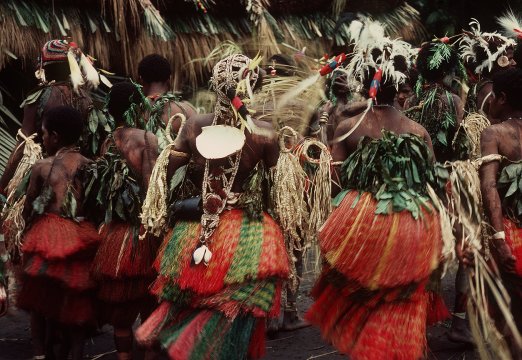 |
| 488. The women followed them, with grass skirts swinging to the rhythm of the drums. |
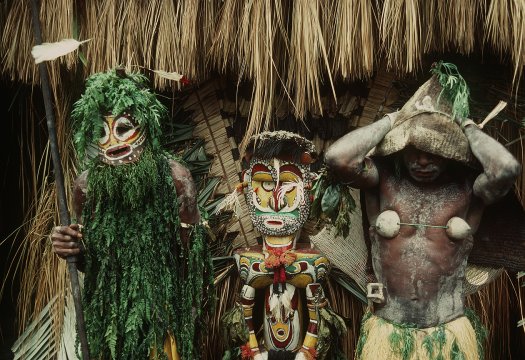 |
| 489. The group from Torembi 1 included two imaginary characters from the swamp – an old man and an old woman – both played by men…with the help of a pair of coconut shells. |
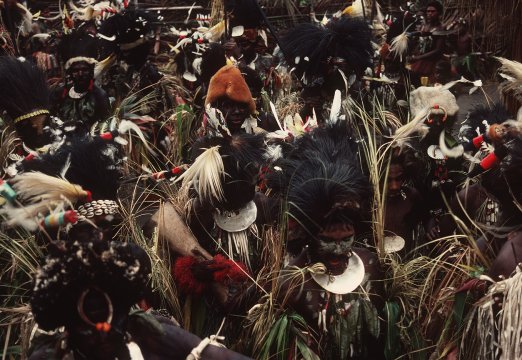 |
| 491. When these had finished speaking, the drums would be sounded and the dancers would set off again. |
 |
| 492. There was no limit seemingly to the age of those who performed … but the youngest had to eat on the run, as their mothers danced around the waak. |
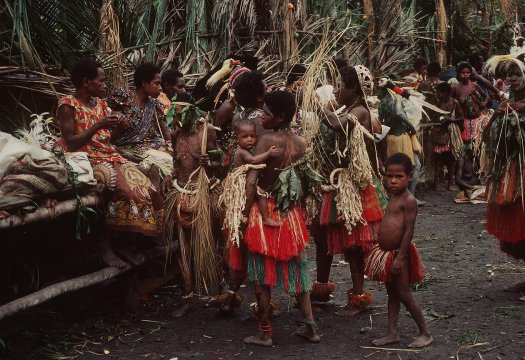 |
| 493.Torembi 2 provided a banquet of pork and rice as payment to the dancers from Torembi 1. |
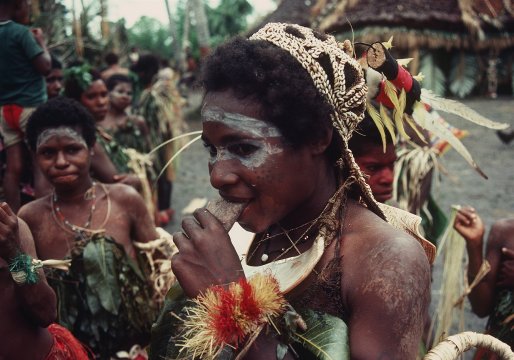 |
| 494. Others brought their own food … mostly pancakes made from sago. |
![]()

![]()
Back to
Cultures in Context Intro: Photos & Recordings
![]()
Text, photos and recordings
by John Tyman
Intended for Educational Use
Only.
Copyright Pitt Rivers Museum,
Oxford University, 2010.
Contact Dr.
John Tyman for more information regarding licensing.
![]()
Photo processing, Web page layout,
formatting, and complementary research by
William Hillman ~ Brandon, Manitoba
~ Canada
www.hillmanweb.com